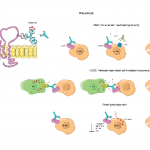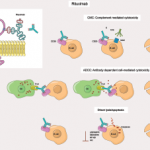Dr. Dennis Ang, a rheumatologist at Wake Forest University in Winston-Salem, N.C., who was not involved in the study, tells Reuters Health by email, “Given that the current standard of care of AAV is to use rituximab during the induction treatment phase, clinicians can be reassured that rituximab is not only efficacious (except for the very severe cases, such as patients on respirator), but also safer—at least during the first five-to-six years post-treatment. It would be interesting to see if these safety data would hold true at 10 or 15 years post-treatment.”
Reference
ad goes here:advert-1
ADVERTISEMENT
SCROLL TO CONTINUE
- van Daalen EE, Rizzo R, Kronbichler A, et al. Effect of rituximab on malignancy risk in patients with ANCA-associated vasculitis. Ann Rheum Dis. 2016 Nov 29. pii: annrheumdis-2016-209925. doi: 10.1136/annrheumdis-2016-209925. [Epub ahead of print]

